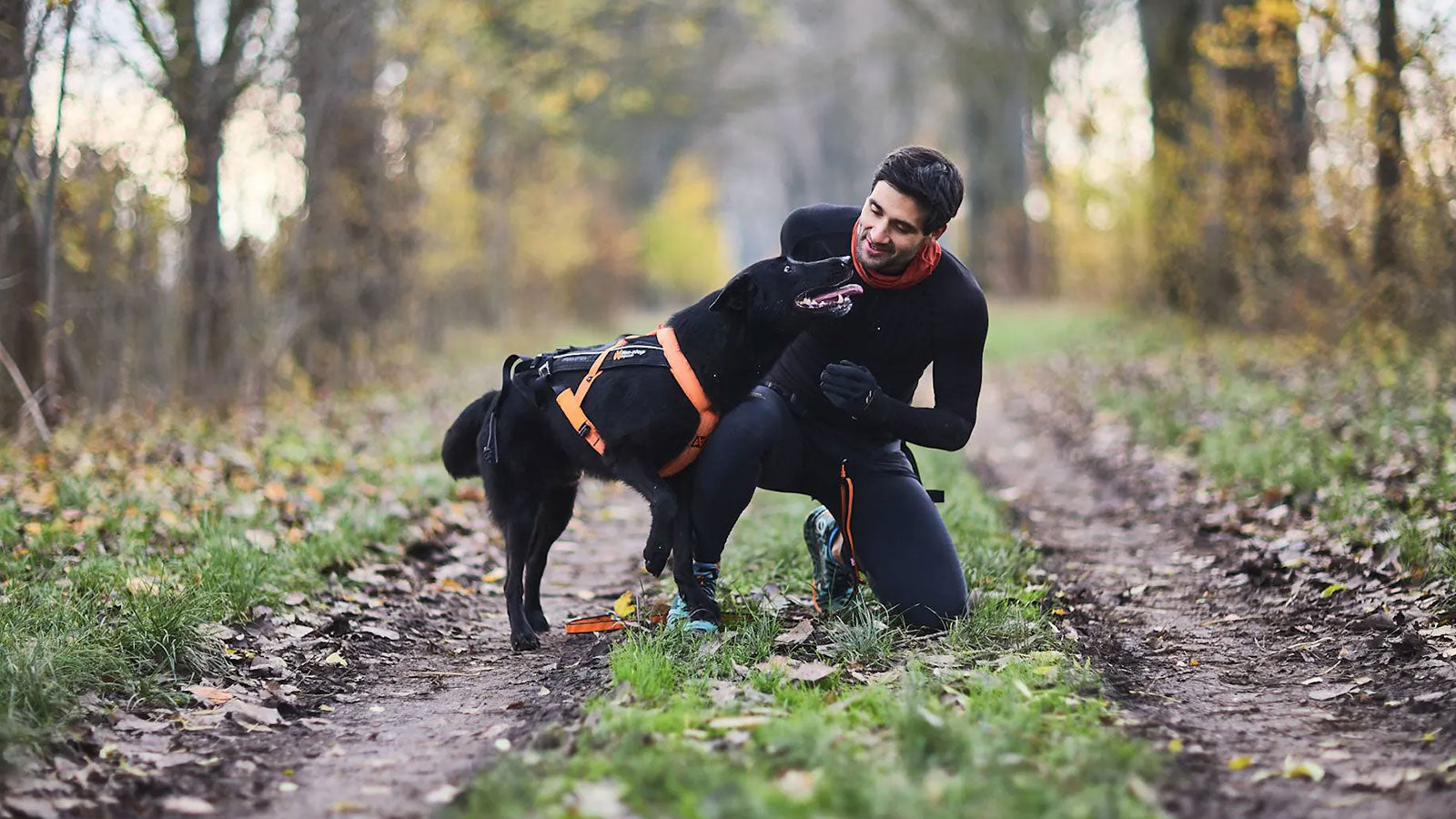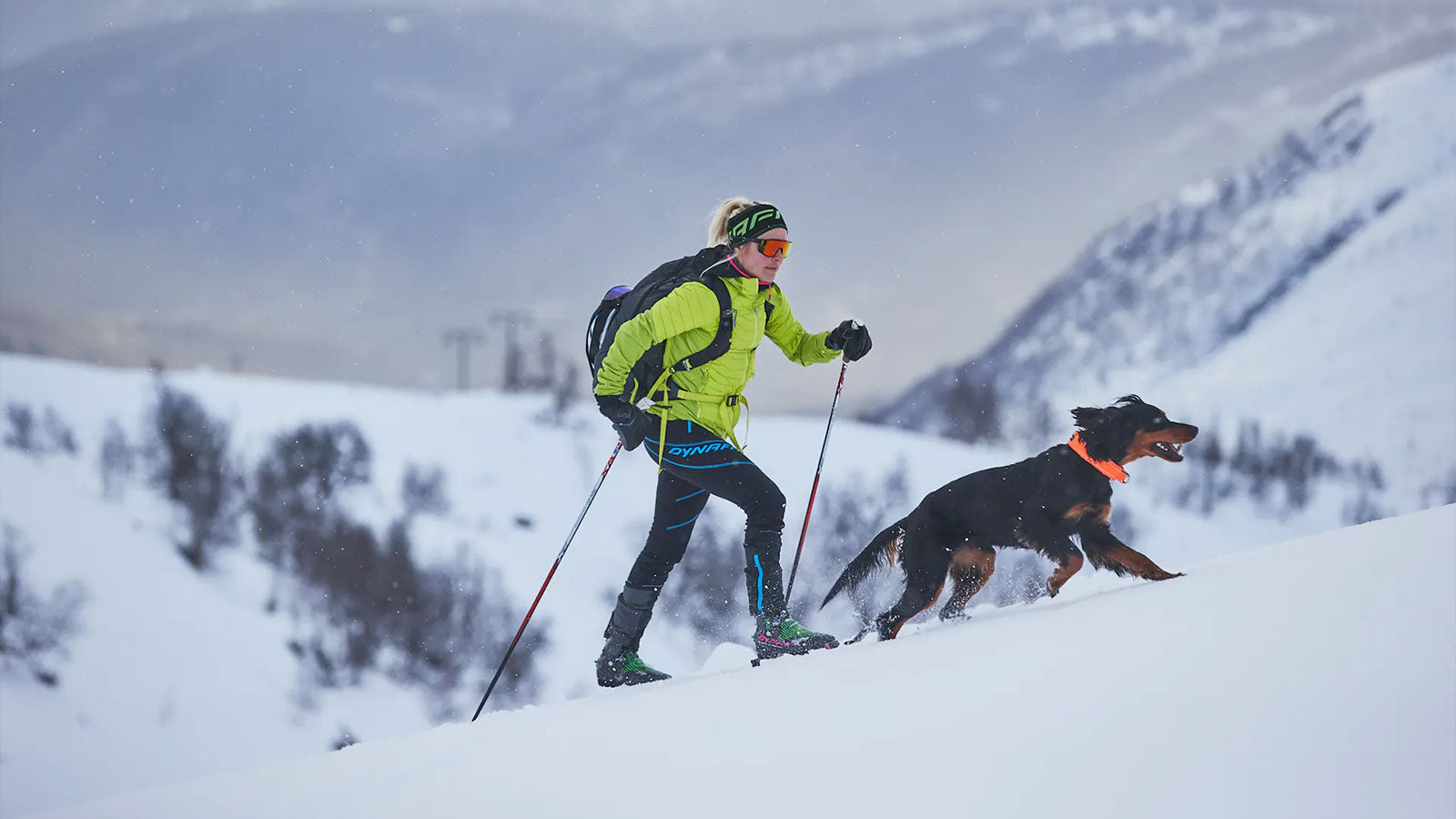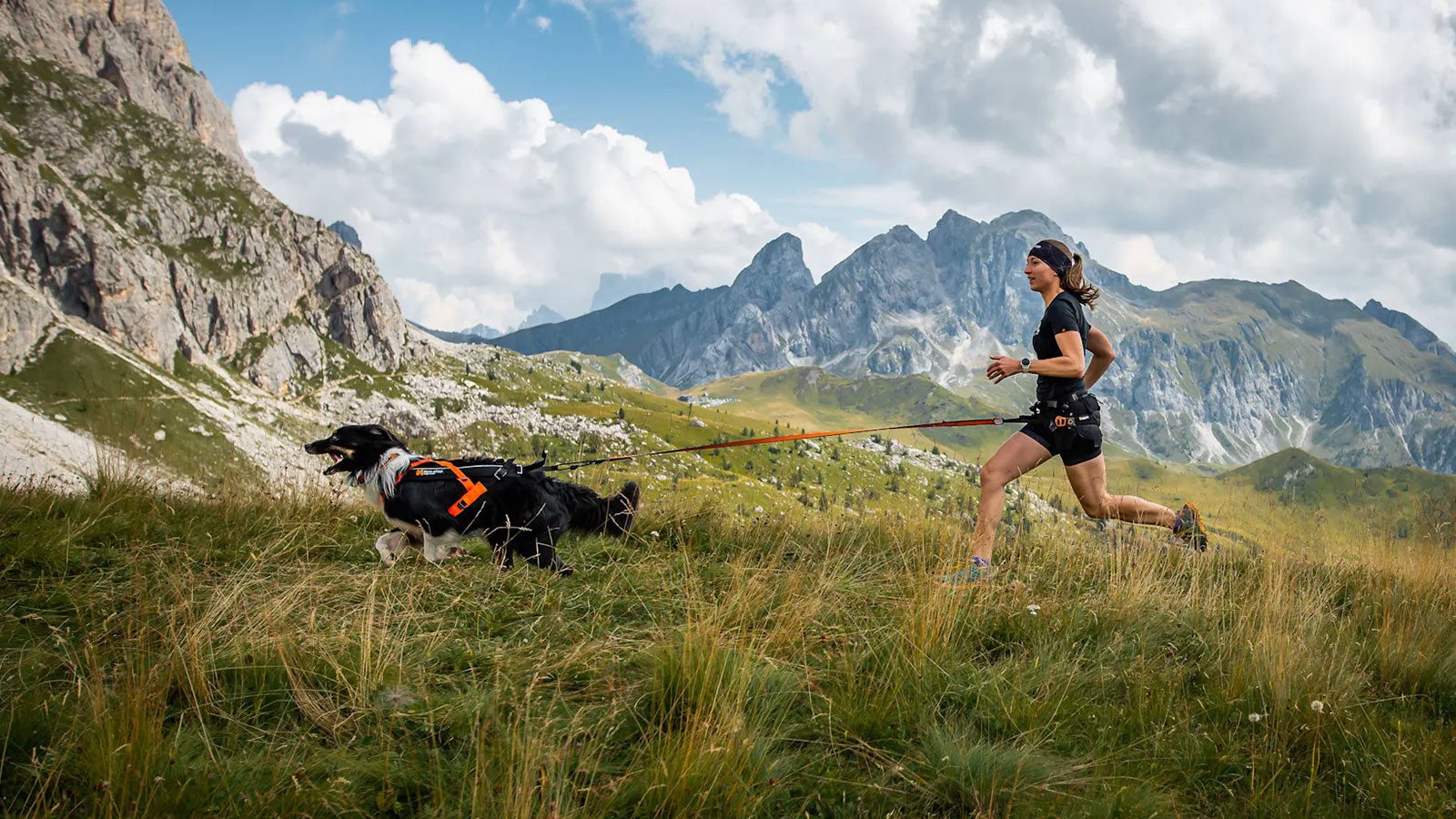You have probably heard it all before; it is wise to do a good warm-up before exercising. That doesn't only apply to you! It is also good for your dog to prepare them for the activity you are going to do. After all, they are also an athlete!
Many principles from our training theory also apply to sporting dogs. You are your dog's personal trainer. It is up to you to put together a training session in a responsible way and to guide your dog well through it, says Rosine Verkleij at Run Dog Academy. But why and how do you do a proper warm-up and cool down for canicross or bikejoring?
The Importance of a Good Training Routine
You need to establish a routine of things you and your dog do before, during, and after training in a logical and clear way. This ensures structure and a good transition between different actions.
Then your dog will know what is expected of them. That way, they can stay calm instead of getting tense or too excited.
It is nice to have a dog who loves to run and is very eager to go. The enthusiasm is often seen as positive, but too much excitement can take a lot of energy at the expense of performance and cooperation.
Too much excitement can also cause an explosive start, which will prevent your dog from using the right energy systems to maintain the duration of the activity. This is comparable to when we start running ourselves as if we are sprinting 100 meters. If the distance turns out not to be 100 meters but 5K, we will have physical problems completing this distance. That is also how it works for your dog. So, keeping your dog calm before training or a race is very important.
Why Exactly Is It Wise to Warm Up and Cool Down?
With a warm-up, we prepare the body physically and mentally for the activity. With a cool down, we prepare the dog for rest. This way, we can also prevent injuries. You simply add a start and an end to your training - a transition from rest to training to rest.
A lot of different things happen in a body when it switches from rest mode to action mode. The activity of the nervous system changes so that energy and blood from the core (vital organs) can go to the shell of the body (such as the muscles and joints). We want the temperature in the muscles, tendons, ligaments, and joints to be increased until the blood circulation in the muscles is at the right temperature and the synovial fluid in the joints is optimal so that they have better lubrication and are more shock-absorbing, Rosine says.
At rest, the circulation of the musculoskeletal system (skeletal muscles, joints, and associated nerve pathways) is low. This should be increased slowly; otherwise, you can easily get injuries. By slowly building up the movement, we get better blood circulation in the parts of the musculoskeletal system that will be used for the activity. This allows the energy systems and nerves to function optimally so that the control (coordination) runs optimally. This allows you to perform at your best and, at the same time, minimize the chance of injuries.
You can also use the warm-up to make contact with your dog and prepare them mentally for their performance. They will learn to pay attention to you and stay calm; it will help to avoid too much excitement. These are the right conditions for good cooperation.
After your training, you also need a transition to rest so that the activity of the nervous system can return to the rest mode. A cooldown will help us do that.
That is why it is wise to start every training or competition with a warm-up and end it with a cool down. In that way, it becomes an essential part of your training routine, and it will help you train responsibly and perform optimally.
How Long Does a Warm-Up Take?
The warm-up for the dog generally takes about 10 to 15 minutes. The cartilage and synovial fluid need this time. The right blood flow in the muscles is done faster. The nervous system also needs to get going, that system controls coordination and is very important for all movements. So take enough time for it.
The temperature of the day also plays an essential role in the duration of the warm-up. In warm weather, the warm-up can be shorter than when it is freezing. A wet, rainy day with a cold wind can be a little risky, so make sure the dog starts with a good temperature in that case. You can also put on a jacket, before and after training, to keep the muscles warm.
Sport-Specific Warm-Up
Different sports require a different warm-up. What the warm-up looks like depends, among other things, on the form of energy used in the sport. A dog doing agility uses a different energy than a canicross dog. The preparation differs if your dog needs a short-term explosive activity compared to a dog that is active for a long time.
The warm-up can also sometimes change slightly. Are you preparing for a tough race? Then your dog needs a more intensive warm-up than for endurance training.
In any case, it is good to take into account that canicross and bikejoring are endurance sports, where the intensity of the activity should not exceed 80% of the maximum.
Tip: Prepare your equipment before warming up your dog so you can immediately harness your dog and start after it.
What Does the Warm-Up Look Like?
In cooperation with dog fitness trainer Petra Mulder at Active Dog Training, Rosine has put together a suggested warm-up program for you and your dog.
Warm-Up for Humans
Are you going to do canicross? Warm up yourself first without your dog, by jogging and doing some loosening exercises. You can probably find enough information about this yourself, so we will not discuss this further.

Warm-Up for Dogs
-
Walking/jogging together
5 to 10 minutes
Take a nice walk with your dog on a loose leash (without canicross or bikejoring equipment).
Let them sniff and do their needs, so that they learn the difference between walking and training, and you can give them instructions to continue running during training later on.
Slowly increase the speed to trotting and then to a sprint at the end. Make sure the leash remains loose and that you and your dog are both relaxed.
The duration and intensity of this section depends on the duration and intensity of your activity.
Purpose: Activate blood flow, activate heart and lung function, activate stamina
-
Fitness exercises
After the warm-up walk/jog, we can do some exercises.
The following exercises optimize the nervous system and muscle tension. This will allow your dog to improve the movements and gaits during training. You can occasionally vary a bit in the exercises so that it doesn't get boring.
Use a treat to lure your dog into making the right movement and give it as a reward. Remember that the exercise should be done slowly and relaxed so that the dog uses their body correctly.
- Nose to the side of the rib cage: 1x left and 1x right
- Nose to toes forelegs: 1x
- Nose up: 1x
- Repetition of exercises above: 1x
- Spin/twist & turn: 2x left and 2x right alternated
- Walking a few steps backwards: 2x
- Sit and stand up: 3x
Does your dog like to do exercises, and does it easily? Then you can also add the following exercises to your warm-up:
- Forelegs: Toes and wrist bend and stretch 2x
- Hind legs: Toes and ankle bend and stretch (standing) 2x
- Giving paw in combination with (in balance) sitting: 3x left and 3x right alternated
- Standing straight / stretched on hind legs: 2x
Purpose: Activate flexibility, loosen joints, and improve balance
Tip: The exercise "spin"/"twist & turn" is also an excellent exercise to see if your dog is flexible in their body. If they don't want to turn one side, or find it more difficult, there could be a chance that they have some mobility problems. A check with an osteopath or animal physiotherapist is advisable then.
Training
After warming up yourself and your dog, the training starts. You can indicate this moment to your dog by using a command or a whistle. Now you can start with a 5- to 10-minute light workout. If your dog has problems with loose leash running, you can put on the equipment for training at the beginning of the warm-up phase.
During the training, you continue to monitor the dog's fitness. A dog that has too much tension or starts to lag behind could need a different warm-up or might need extra support during the training.
Cooling Down for Dogs
The cooldown ensures a gradual transition from exercise to rest. By cooling down, you ensure that the heart rate and body temperature decrease at a reasonable pace.
Continue walking for about 5 to 10 minutes after the exercise. This is to allow your dog to cool down gradually. It prevents stiffness and allows the body to return to rest mode.
Just like with the warm-up, a good cooldown is essential to reduce the risk of injuries and to help the recovery process.
With proper warm-up and cooldown routines, you can ensure that both you and your dog stay healthy and perform at your best!





Κοινοποίηση:
The essential gear for Canicross
Everything you need to know to take your dog skiing